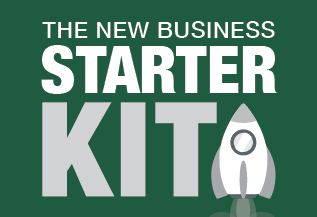Tax Planning 2016
 The end of the financial year is again fast approaching and time is running out to minimise your tax burden for 2016.
The end of the financial year is again fast approaching and time is running out to minimise your tax burden for 2016.
The purpose of this blog is to highlight some year-end tax planning opportunities but you need to act quickly and we encourage you to schedule a meeting to assess your options. We note:
- To maximise the current year benefits we recommend the preparation of a preliminary estimate of your taxable income for the year ending June 30, 2015 to identify the size of any tax ‘problem’
- A review of your latest financials (if current figures are not available then last year’s figures will suffice) to determine the need for tax planning tactics like expense pre-payments or income deferral.
The following list of tax planning opportunities is not exhaustive and we urge you to contact us to discuss any strategy you are planning to implement before June 30, 2015.
(Note: the strategies below are largely applicable to Small Business Entities (SBE's). The general criteria for an SBE is a turnover of less tham $2million. If your business is not an SBE then please contact us to discuss which strategies will be applicable to you. If the strategy is only applicable to an SBE it will be designated as such.)
-
Depreciating assets costing less than $20,000 (SBE) - The cost of these depreciating assets can be deducted in full in the income year they are acquired. Therefore, where commercially viable, SBE taxpayers should consider acquiring such assets for use (or have them installed ready for use) by 30 June 2016.
-
Depreciating assets costing $20,000 or more (SBE) - The cost of these depreciating assets acquired are allocated to the general small business pool and depreciated at a rate of 15% in the first year (30% for each subsequent year). As the rate of 15% applies in the year the asset is held and first used (or installed ready for use) regardless of the date of purchase, SBE taxpayers should consider acquiring assets for use (or have them installed ready for use) by 30 June 2016.
-
Prepay expenditure for the next 12 months (SBE) - Prepaid expenditure with an eligible service period of 12 months or less that ends in the 2017 income year will be deductible if paid by 30 June 2016. Common examples of eligible prepaid expenditure include:
-
Lease payments
-
Rent
-
Insurance
-
Interest
-
Business travel
-
Seminars & training
-
Subscriptions
-
-
Superannuation Contributions - You can deduct superannuation contributions made to a complying superannuation fund for employees or for themselves (in the case of a sole trader). You are subject to a cap on these contributions known as the concessional contribution cap. For the 2016 year the cap is $30,000 if you are under 49 years of age and $35,000 if you are 49 or over.
Expenditure on Water Facilities (Primary Producers) - an immediate deduction for capital expenditure on water facility assets such as dams, tanks, bores, irrigation channels, pumps, water towers and windmills - previously, depreciation deductions were claimed over three years.
Expenditure on New Fencing (Primary Producers) - an immediate deduction for capital expenditure on new fencing assets - generally, depreciation deductions were previously claimed over up to 30 years.
Expenditure on Fodder Storage (Primary Producers) - depreciation over three years for capital expenditure on fodder storage assets such as silos and tanks used to store grain and other animal feed - generally, depreciation deductions were previously claimed over up to 50 years.
Farm Management Deposits (Primary Producers) - you can claim a deduction for FMDs you make in the income year you made them provided the FMD is not withdrawn within 12 months. If, after 12 months, you withdraw an FMD, the amount of the deduction you claimed is included in your assessable income in the income year the deposit is repaid to you.
Consumables (e.g., office supplies, spare parts, stationery, etc.) - Consider purchasing consumable items by 30 June 2016, either to top-up existing supplies or to build-up a store of supplies for future needs. However, purchases that are beyond the immediate requirements of the business may need to be claimed on a usage basis. In this regard, the ATO takes the view that immediate usage would generally be within three months.
Repairs - Generally, business taxpayers are entitled to deduct the cost of repairs to business assets (e.g., business premises and depreciating assets). Therefore, consider bringing forward any planned deductible repair expenditure to the 2016 income year.
Disclaimer: This blog contains general information only. Regrettably, no responsibility can be accepted for errors, omissions or possible misleading statements or for any action taken as a result of any material in this guide. It is not designed to be a substitute for professional advice, as such a brief guide cannot hope to cover all circumstances and conditions applying to the law as it relates to these items.








